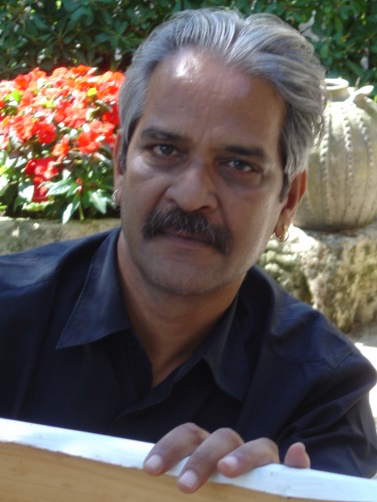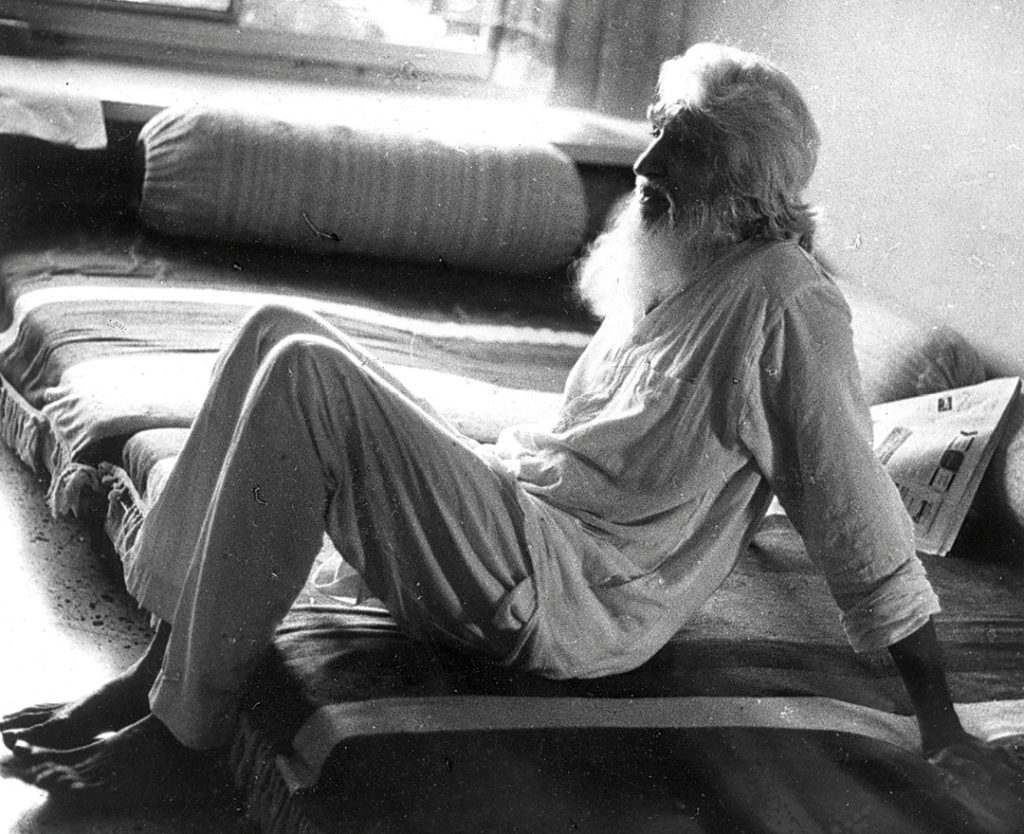“I am the sound of silent footsteps; listen closely, and you might hear it.
Interviewing Maqbool Fida Husain (Baba ) is like interviewing a century personified. I had many encounters with him, all of which leave so many memories behind, including his work ethic. He was busy the majority of his day working. I hardly ever came in contact with him, when he was not drawing or spent a morning, an afternoon or an evening without painting something. Which is nearly unimaginable, because he just seems like one of those artists that — lived to paint. Even he used to have a studio set up on the set, where he would draw between shoots for that matter. And from what I have seen with other painters this is a very individual process. Husain, however, is on a different league. He devoted his entire life to painting. He is a pure, complete and well-rounded artist.
1974 was the year I first met him as a painter. He had come to Indore and that time I was in college. Then we came to know Husain Sahab is in town, so we quickly decided to host a group Art show and asked him if he can do the inaugural honours. His enchanting personality and enthralling voice made our exhibition an unforgettable experience. He is so inescapably present that the separating of him as a human from him as an artist would appear quite near impossible. He is a great painter and a wonderful person. You will always view both sides. Then he would say, “Lets go for a tea,” after the opening of the exhibition. Instead,we would go to a tea stall in the Bombay Bazaar—a favorite one of his from years ago—and drink tea there. Then, we would come back up to the show. That was the kind of person he was: nothing mattering and everything at stake. He is graceful, elegant and truly — very alive…beating his heart every minute. Something unexpected is always happening around him that you could never dream of.
He suddenly came to the college a day, and said I want to create an art work for this place. We soon found a canvass and Husain started his work. He began the painting from the bottom end of the canvas, and fashioned these shapes that looked kinda erotic. It was sensuous, the painting that was forming. Slowly and slowly it progressed, till when we realised that this room was being painted as Ganesha. There was nothing of the carnal in it. But his method and the manner in which he started the painting would have left others questioning what it was that Michelangelo had been doing. This is what makes Husain different — the way he visualises his paintings. He could go from anywhere to any take the painting in any direction. He could turn any shape, form, colour or line into something else entirely. And there are so so many stories like this one that keep unfurling every time you meet someone doesn’t it? Every time we met, an anecdote on Husain was thrown at us. It really helped us realise that creativity is not limited. Even at ninety-five today, the energy and quickness that he paints with is well beyond any normal painter—certainly far more than I could manage. This magic belongs to Husain and only for him. His mind, memory jokes and brilliant intellect are as lucid as ever; unwavering even at this age. You can present ideas to him, but you cannot dictate them.
Initially I had two opposite perceptions of Husain. I knew him in many ways: an internationally famous painter; he also walked barefoot everywhere. There was a paradox in this that fascinated me. He used to come home once in a while as our friendship grew. Instantly, I glanced down to his feet for a potential sight of sandals. His feet were bare. Then after I spent 3 days back to back with him and friends in Indore. The rest of us had sandals on up to our ankles, or something like that; and he was comfortably barefoot.
Only one occurred, however, apparently due to his tendency not to wear shoes. When he went to pick up the Padma Shri from the President of India, he did so barefoot much to the ire on media. It is against protocol and disrespectful to the President they said. Afterwards we discovered he had sworn never to wear sandals following the 1964 funeral of his friend Muktibodh. He was so close to Muktibodh that when his friend passed on, he sacrificed something in remembrance of his friendship and never looked back.
Once Husain recounted this amusing anecdote to me Playfully, “I wore a white shoe in one foot and black on other and went around all my friends who are painters house. Not a single one noticed. As I was leaving (I literally had to be like, look I wore two different shoes – one black, one white. And this is his case of humor. The ironic part, of course, is that all the people he had visited were painters for whom ‘seeing’ should be paramount, and yet none them noticed—even among our pre-eminent artists.
Husain was a great raconteur. The story went viral, as it admittedly is a compelling tale on its own. Of course, had Husain not been a famous painter he would have been a celebrated writer. He was an ardent story-teller, and he told tales in his own way. At times, he wrote picture postcards to his friends; the cards were both a form of storytelling—with words and with images.
In those days, we were giving lectures at college and dreaming to become prominent like Husain. Husain was a live picture in front of our eyes to follow. We started focusing on his paintings during that time. He developed his paintings from Indian Culture-rich background. For example, probably we were unable to understand the paintings painted by him when, but he was beautiful rich cultural and enriched character that we were overshadowed. Many times, we used to see his paintings whether we were able to grasp them or without understanding we were used to see them. Two or thrice his early books along with his paintings, drawing and collages were in my home. Most of my friends used to copy his paintings directly. I used to copy his lines without knowledge his paintings. But it was not suitable to copy their known paintings. I am still influenced by his lines and what had been taught to me regarding his paintings, but I felt it unethical copying his paintings. Many of my friends previous artists did copy his paintings. His horses were so famous. In Indore, many artists were painting only horses. They were painting the exact horse exactly as it was painted by Husain. But these horses were dead one because these horses were not exactly as the real horses it was painted by Husain. It was full of energy. Husain’s horse was like Husain’s horse was beginning from Duldul. It is the leader of the procession of the Muharram in Indore. Duldul is creating procession giving the chance to another one to continue the procession. For Husain, his horses were intellectual, deep faith and his cultural growth. Horses kept values. His horses are Haddi Pachchauli creativities. Husain’s horses were Churning of the ocean and Duldul also. Other artist horses in Indore just imitating Husain, without a soul. I remembered one of his statements “I am selling horses and sleeping( Litereal translation for मैं घोड़े बेच कर सो रहा हूँ)/sleeping like a log
.‘The original chapter in Hindi was translated into English from the book Unke Baare Mein authored by Akhilesh.

Born in 1956, is an artist, curator and writer. He has gained worldwide recognition and appreciation for his works through extensive participation in numerable exhibitions, shows, camps and other activities.





